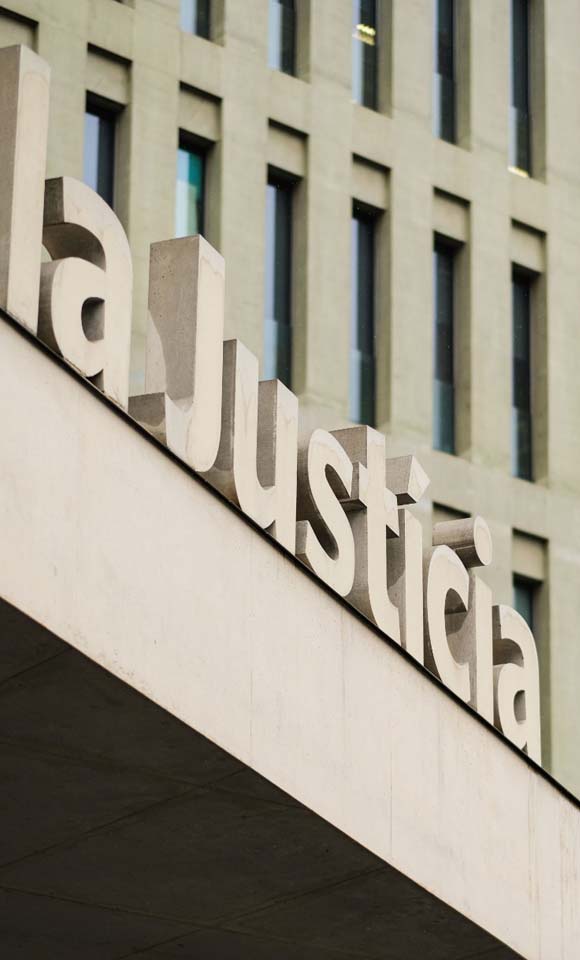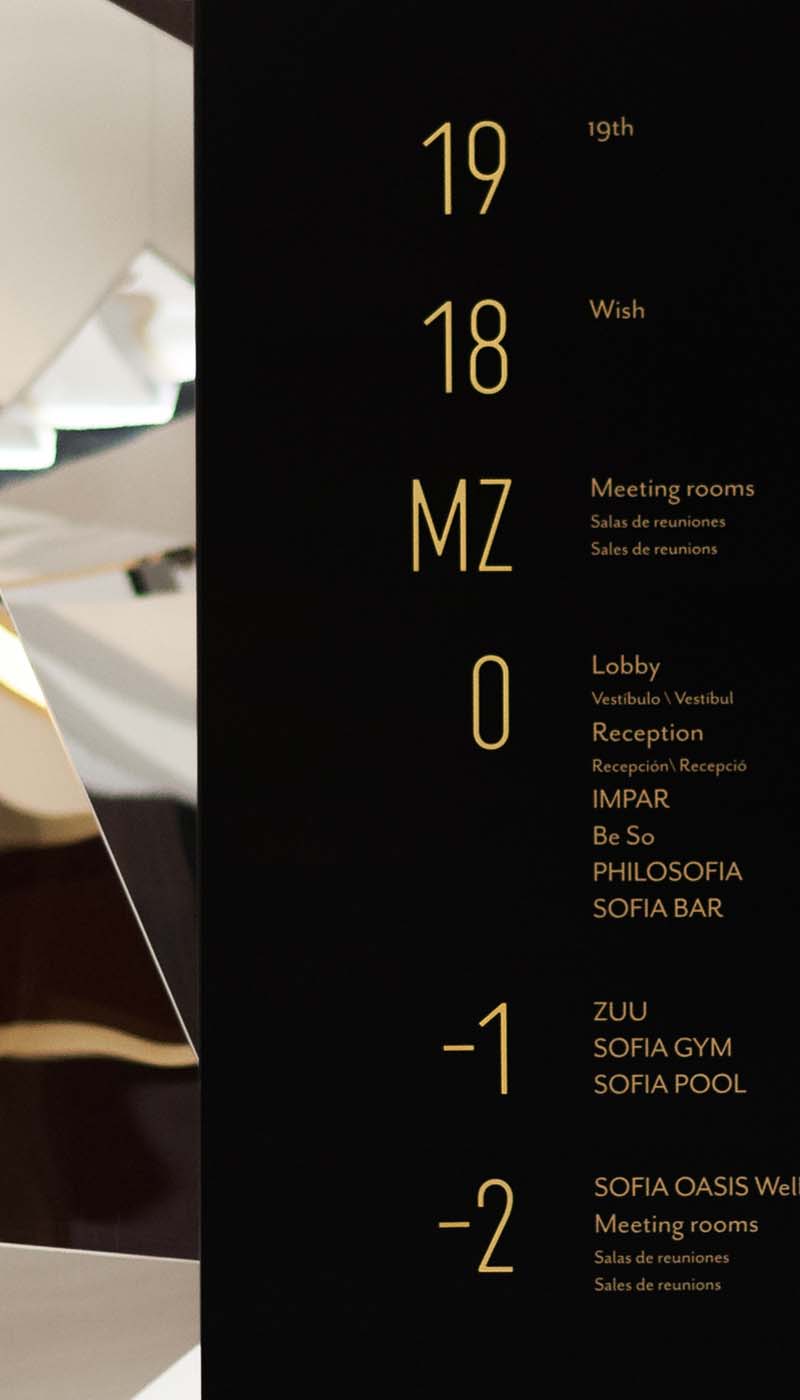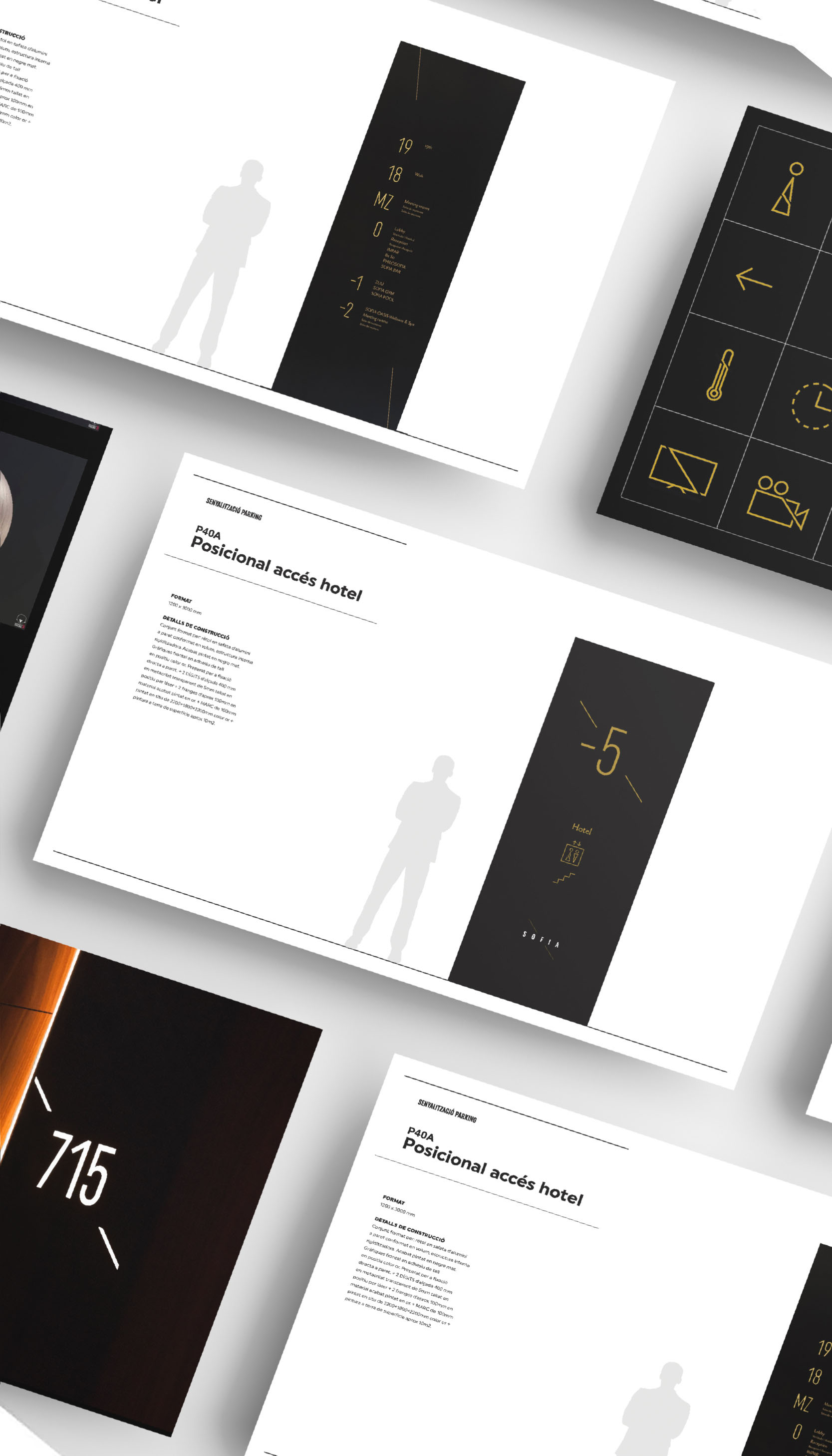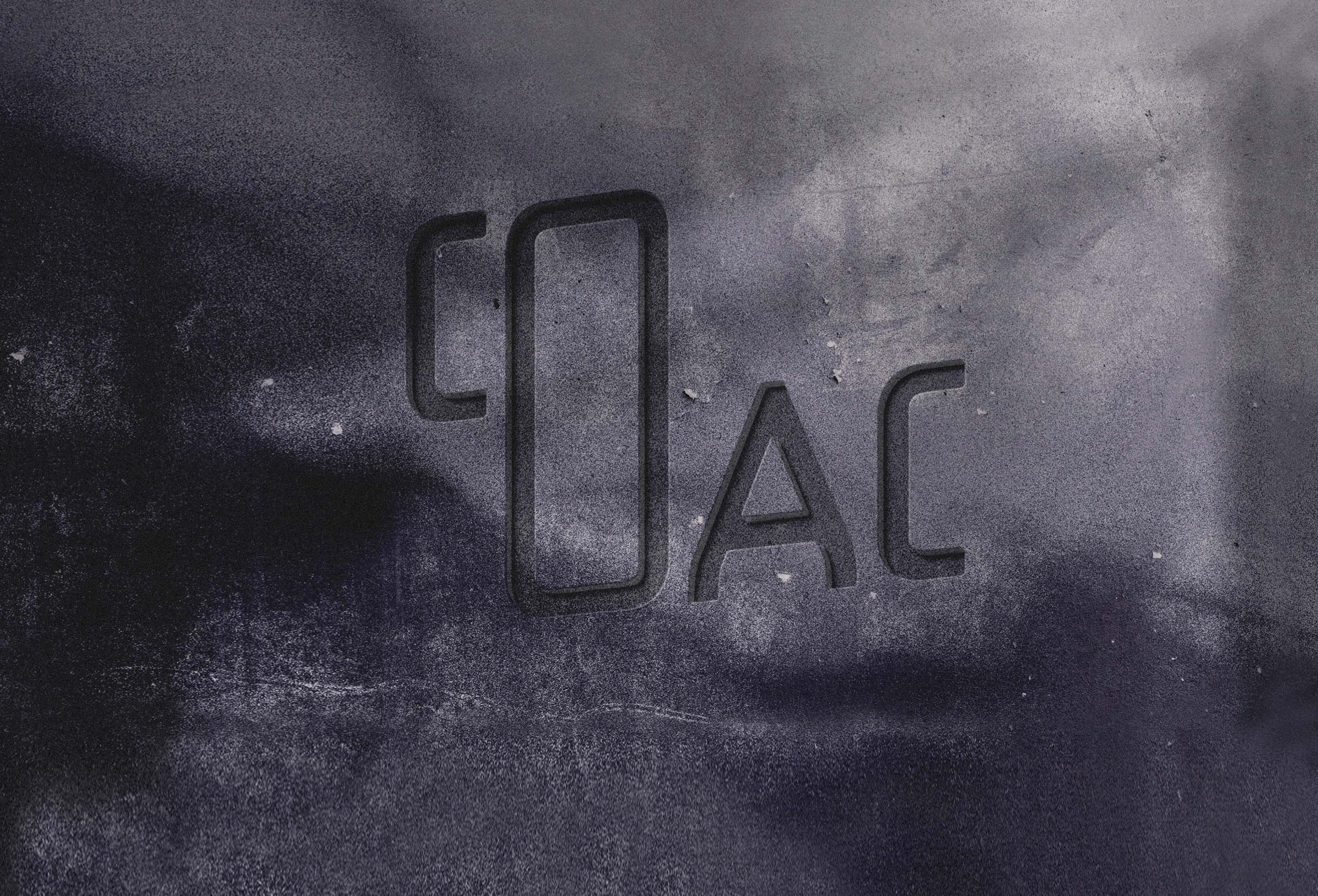Signage
Design

Signage is a visual communication system which, through iconic symbols and linguistic symbols, aims to orientate the individual within a given space. We establish a link between the brand and its public through the creation of signage systems that guide, orientate and organize the movements of people in locations that pose a behavioural dilemma: from large public spaces to small private spaces.

Why do we
need one?
Any busy space that needs to identify services must organize the flow of movement through signage that provides clear, precise and rapid information. All these signs not only facilitate the circulation of the user within the space but also serve to provide the identity with greater uniformity. We create signage systems consistent with the visual identity that highlight and enhance the brand image.
What does it
consist of?
1
Outdoor signage
When signs are located in the exterior of a space, we refer to them as outdoor signage. This has the main purpose of communicating the brand and organizing access to the interior of the building. As exterior signage is perceived at medium or long distances and there are visual stimuli in the environment that can make it difficult to see, we use techniques that facilitate the visualization of the signs: illumination, oversizing or fabrication.This includes elements such as signs, volumetric signs, banners, totems, plaques and information panels. When the installations are outdoors (e.g. parks, gardens or urban areas) we also talk about outdoor signage. This type of space also requires more complex elements such as information panels, directories or maps.

2
Indoor signage
Indoor signage is visualized at short or medium distances and aims to limit its visual impact so as not to detract from the environment in which it is placed, while ensuring that it is easy and effective to understand. It includes elements such as directional and positional signage and directories.
These are constructed graphically from linguistic symbols (text), iconic symbols (pictograms) or a combination of both. We design signage systems that solve problems of organization and identification of services, integrating them in the most effective way into each environment.

3
Sign types
Signs can be classified into different types according to their function.
- Identifying: they serve to indicate the organization and its location. They are mainly used outdoors, although they can also be found indoors, fulfilling an identifying and ornamental function at the same time.
- Orientational: their aim is to situate the user within the space. An example of this is the location map.
- Directional: their function is to organize circulation. They indicate direction through the use of arrows and typographic compositions
- Informative: they provide information on various data relating to the environment or the organization (services, opening hours, descriptions, etc.).
- Regulatory: they have the function of guiding and alerting the user in case of danger. Examples include fire signs and prohibition signs.

4
Typography
Typography is a key element in signage design. The correct use of typography ensures that the message is understood and assimilated effectively. The typographic choice criteria should take into account the brand’s visual identity while always prioritizing legibility. It is also crucial to make appropriate use of text bodies and weights, which always depend on the position of the sign and the distance at which it is displayed. The correct use of corporate colours should also be ensured, prioritizing the legibility of the message.

5
Iconography
In order to facilitate orientation and the identification of services, signage uses a universal code of signs and visual signs (such as arrows or emergency signs) or generates new icons that are easily understood and recognizable, as they maintain a relationship of similarity with the object or service they represent. Any signage programme requires a system of icons designed in accordance with the corporate visual identity.

6
Shapes and materials
The product design of the various signage media and the materials chosen to produce them should take into account the corporate identity programme, and ensure consistency and uniformity in terms of colours, materials and shapes. The materials of construction and their finishes can help to integrate the signage into the environment. It is very important to choose materials with durability and strength in mind. Lighting also plays a key role in facilitating the display of information and can be used as a standalone signage and orientation element.

7
Brand or Signage Guidelines
The elements that form part of the signage system are described and standardized in the Brand Guidelines, which also specify the production and application criteria. This document serves as a guideline for the correct application of the signage and for the creation of new parts. It can also exist as an independent manual, without being part of the Brand Guidelines.

FAQS
-
What is the difference between signage and wayfinding?
Although the two terms are used interchangeably, there are some differences between them. Signage is the principle or act of signposting, i.e. putting up signs to inform or guide. Signage does not require special design adaptation, it is simply added to the environment and is understood by convention (e.g. road signs). Signage is the evolution of signposting and could be defined as the science that studies orientation in space and the interaction of people in that space. It is also the technique that organizes and standardizes these interactions. It also encompasses a wide variety of signs or resources such as maps, paint markings, lighting, mobile applications, digital screens and even augmented reality. Signage adapts to the environment and visual identity and, in addition to fulfilling its original function of orientation, aims to enhance the brand image.
-
What does good signage design look like?
Above all, signage seeks functionality: the message must be conveyed in such a way that it can be perceived quickly and easily. To achieve this, the graphic and linguistic symbols must be composed through succinct formulas, prioritizing sobriety over overloaded designs. Good signage design will take into account semantic values (the meaning of the signs and messages will be clear and understandable), syntactic values (these signs will form part of the same visual system) and pragmatic values (the signs must be visible, recognizable and durable).
-
What is corporate signage?
Corporate signage is a physical manifestation of the brand. Signage should be designed in accordance with the brand identity, as this ensures visual continuity and brand recognition.
-
What spaces can be signposted?
Spaces and/or activities – indoor or outdoor – that need to improve their circulation flows, in order to facilitate the autonomy of their users, can be signposted. Social organizations that fall within the scope of signage include: traffic and transport (airports, train, sea and underground stations), shops (restaurants, hotels, department stores, supermarkets and other shops), educational facilities (universities and schools), cultural facilities (libraries, libraries, museums, theatres, cinemas, art galleries), health facilities (hospitals), sports facilities, religious facilities, institutions (public administration), mass events (Olympics) and/or green spaces (parks, gardens and squares).
-
What is digital signage?
Digital signage, also known as dynamic or multimedia signage, uses screens to project the content to be signed. LCD monitors, plasma screens, LED panels or projectors can be used. They can be used both outdoors and indoors and provide dynamic, interactive content that is easy to update. They can replace physical signage media or can complement them. Sometimes even augmented reality technology can be used.
-
Can emergency signage be redesigned?
Emergency, evacuation and rescue signage is intended to guide the user very effectively in a hazardous situation. It is mandatory and subject to standards. It can be redesigned, but in a very limited way and always in compliance with legislation and standard visual codes.
Let's talk
Together,we cancreatesomethingextraordinary
We will collaborate to find the right answer and bring progress to your business and to the world.





